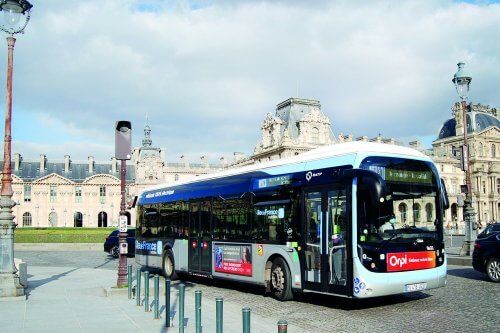EUROPE
European bus registration figures for 2021 show the growth in popularity of electric buses across Europe, and that for the first time battery or hybrid buses outsold natural gas equivalents. Figures released by Chatrou CME Solutions showed 14,990 city buses registered in Europe in 2021, an increase from the 14,842 in 2020. Of these, 59.4%were equipped with alternative drivelines.
The proportion of natural gas buses (CNG and LNG) dropped from 17.7% to 14.8%, whilst the percentage of battery buses rose sharply from 14.8 to 21.7%, with 3,259 vehicles registered. The number of hybrid buses, mostly mild hybrids from MAN and Mercedes, increased marginally to 3,270, an increase from 19.7% in 2020 to 21.8% in 2021.
Buses powered by hydrogen topped 1% of the total for the first time, reaching 1.1%, up from 0.3% in 2020. In the ten years from 2012 to 2021, 259 hydrogen buses were registered in Europe (including the UK), of which 158 were in 2021. Van Hool supplied 96 hydrogen busesbuses in the year, Wrightbus 71, Solaris 38 and Caetano 24.
If complete BYD buses supplied from its own factories in France, Hungary and China are set apart from those bodied by the BYD ADL partnership in the UK, Solaris retains its position as market leader across Europe. Of 3,882 new electric city buses in Europe in 2021 Solaris delivered 390 (11.9%). ADL sold 375 electric buses on BYD chassis (11.4% of the European total) in 2021 and ranked second, whilst BYD sold a further 257, or 7.8%.
Over the ten year period to 2021, the Netherlands dominated the electric bus market with 1,319 of the 8,513 buses registered to date. Germany ranked second with 1,228, closely followed by the United Kingdom with 1,150 and France (1,013).
In 2021 however, the Netherlands saw a significant drop in new e-bus deliveries, with just 152 of the 3,282 new electric buses registered across Europe. Germany’s 555 e-buses took it into the lead, followed by the United Kingdom with 540 and France with 512.


